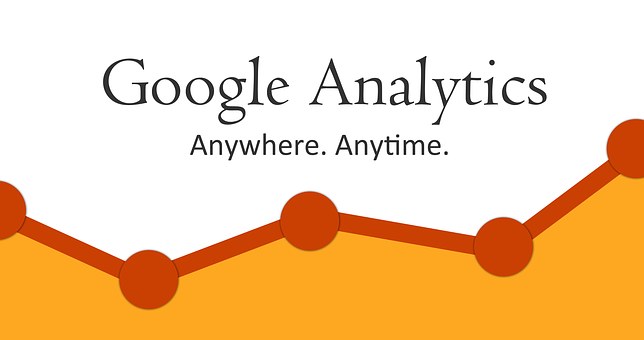Big Data is an umbrella term which encompasses all sorts of data which exists today. From hospital records and digital data to the overwhelming amount of government paperwork which is archived – there is more to it than we officially know.
You can’t categorize Big Data under one definition or description, because we are still working on it. The great thing about information technology is that it has always been available for technology companies, businesses and all types of institutions.
It was the emergence of cloud computing which made it easier to provide the best of technology in the most cost-effective packages. Cloud computing not only reduced costs, but also made a wide array of applications available to the smaller companies.
Just as the cloud is growing steadily, we are also noticing an explosion of information across the web. Social media is a completely different world, where both marketers and common users generate loads of data every day. Organizations and institutions are also creating data on a daily basis, which can eventually become difficult to manage. Take a look at these statistics on Big Data generation in the last five years;
- 2.5 quintillion bytes (2.3 Trillion Gigabytes) of data are created every day.
- 40 zettabytes (43 Trillion Gigabytes) of data will be created by 2020.
- Most companies in the US have at least 100 Terabytes (100,000 Gigabytes) of stored data.
These high volumes of data present a challenge to the cloud environment. How to manage and secure the essence of this data rather than just stacking it?
It seems like cloud computing and big data are an ideal combination for this. Together, they provide a solution which is both scalable and accommodating for big data and business analytics. The analytics advantage is going to be a huge benefit in today’s world. Imagine all the information resources which will become easily accessible. Every field of life can benefit from this information. Let’s look at these advantages in detail;
Agility
The traditional infrastructure of storing and managing data is now proving to be slower and harder to manage. It can literally take weeks to just install and run a server. Cloud computing is here now, and it can provide your company with all the resources you need. A cloud database can enable your company to have thousands of virtual servers and get them working seamlessly in only a matter of minutes.
Affordability
Cloud computing is a blessing in disguise for a company that wishes to have updated technology under a budget. Companies can pick what they want and pay for it as they go. The resources required to manage Big Data are easily available and they don’t cost big bucks. Before the cloud, companies used to invest huge sums of money in setting up IT departments and then paid more money to keep that hardware updated. Now the companies can host their Big Data on off-site servers or pay only for storage space and power they use every hour.
Data processing
The explosion of data leads to the issue of processing it. Social media alone generates a load of unstructured, chaotic data like tweets, posts, photos, videos and blogs which can’t be processed under a single category. With Big Data Analytics platforms like Apache Hadoop, structured and unstructured data can be processed. Cloud computing makes the whole process easier and accessible to small, medium and larger enterprises.
Feasibility
While traditional solutions would require the addition of more physical servers to the cluster in order to increase processing power and storage space, the virtual nature of the cloud allows for seemingly unlimited resources on demand. With the cloud, enterprises can scale up or down to the desired level of processing power and storage space easily and quickly. –Source
Big Data analytics require new processing requirements for large data sets. The demand for processing this data can raise or fall at any time of the year, and cloud environment is the perfect platform to fulfill this task. There is no need for additional infrastructure, since cloud can provide most solutions in SaaS models.
Challenges to Big Data in the Cloud environment:
Just as Big Data has provided organizations with terabytes of data, it has also presented an issue of managing this data under a traditional framework. How to analyze the large sum of data to take out only the most useful bits? Analyzing these large volumes of data often becomes a difficult task as well.
In the high speed connectivity era, moving large sets of data and providing the details needed to access it, is also a problem. These large sets of data often carry sensitive information like credit/debit card numbers, addresses and other details, raising data security concerns.
Security issues in the cloud are a major concern for businesses and cloud providers today. It seems like the attackers are relentless, and they keep inventing new ways to find entry points in a system. Other issues include ransomware, which deeply affects a company’s reputation and resources, Denial of Service attacks, Phishing attacks and Cloud Abuse.
Globally, 40% of businesses experienced a ransomware incident during the past year. Both clients and cloud providers have their own share of risks involved when making an agreement on cloud solutions. Insecure interfaces and weak API’s can give away valuable information to hackers, and these hackers can misuse this information for the wrong reasons.
Some cloud models are still in the deployment stage and basic DBMS is not only tailored for Cloud computing. Data Acts is also a serious issue which requires data centers to be closer to a user than a provider.
Data replication must be done in a way which leaves zero room for error; otherwise it can affect the analysis stage. It is crucial to make the searching, sharing, storage, transfer, analysis, and visualization of this data as smoothly as possible.
The only way to deal with these challenges is to implement next-generation technology which can predict an issue before it causes more damage. Fraud detection patterns, encryptions and smart solutions are immensely important to combat attackers. At the same time, it is your responsibility to own your data and keep it protected at your end while looking for business intelligent solutions that can ensure a steady ROI as well.










![7 data-driven ways to optimize your online store for mobile [Infographic]](https://crayondata.ai/wp-content/uploads/2019/11/optimize-1.jpg)


![Top tips and tricks to improving your customer experience [Infographic]](https://crayondata.ai/wp-content/uploads/2019/01/customer-journey-1.jpg)









